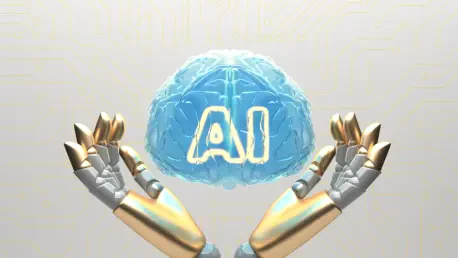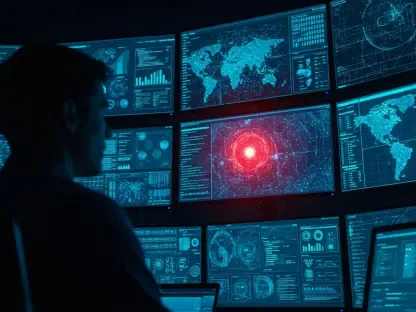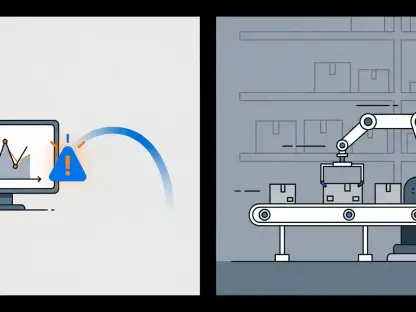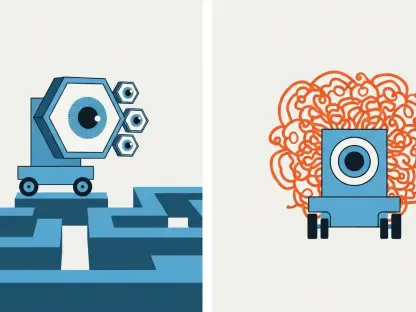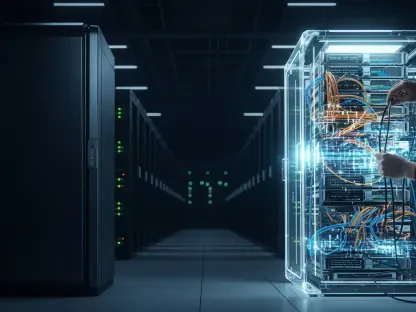Artificial intelligence (AI) is reshaping the landscape of creative industries, offering tools like ChatGPT, DALL-E, and Midjourney that empower artists, writers, and designers to push boundaries in unprecedented ways, while also streamlining workflows and sparking inspiration. These technologies level the playing field for freelancers and small businesses competing in a fast-paced digital market. However, as AI becomes more integrated into creative processes, it also raises profound ethical questions that demand careful consideration. How can the immense potential of AI be harnessed without compromising the authenticity and human essence that define art? The tension between innovation and responsibility lies at the heart of this evolving debate. Public concerns about plagiarism, copyright infringement, and job displacement further complicate the adoption of AI in fields like writing, visual arts, and music. This article explores the dual nature of AI as both a transformative ally and a potential threat, delving into practical strategies to ensure its ethical use. By striking a balance, creators can leverage AI’s strengths while safeguarding the integrity of their craft. The journey to responsible integration starts with understanding the promises and pitfalls that accompany these powerful tools, setting the stage for a thoughtful examination of how to navigate this complex terrain with accountability and transparency at the forefront.
Balancing Innovation with Ethical Concerns
The allure of AI in creative work is undeniable, as it offers a remarkable ability to enhance productivity and inspire new ideas across various domains. Tools such as Jasper AI and Grammarly enable creators to brainstorm concepts, draft initial content, and polish their work with speed and efficiency that were unimaginable just a few years ago. For small businesses and independent artists, this means the chance to compete with larger entities by producing high-quality output without expansive resources. The ability to generate a novel outline or conceptual artwork in moments can be a game-changer, freeing up time for deeper creative exploration. Yet, this convenience comes with a significant caveat: the risk of losing the personal touch that makes art resonate on a human level. When AI takes on too much of the creative load, the result can feel mechanical, lacking the emotional depth and unique perspective that define individual expression. Striking a balance where technology supports rather than overshadows human ingenuity is essential for maintaining authenticity in any creative endeavor.
Beyond the loss of personal voice, ethical challenges cast a long shadow over AI’s integration into creative fields. A primary concern is the way AI systems often draw from existing works to generate content, frequently without explicit permission or attribution to original creators. This practice has led to high-profile legal battles, such as those involving platforms like Midjourney, where major corporations have raised issues of copyright infringement. The lack of clear guidelines on ownership and fairness in AI-generated material creates a murky landscape where creators’ rights can be easily overlooked. Additionally, there’s a growing fear among the public that AI might deceive audiences by presenting machine-made content as human-crafted. Surveys indicate widespread unease about the potential for AI to undermine trust in creative industries, with many questioning whether such tools could eventually displace human talent altogether. Addressing these concerns requires a commitment to transparency and a framework that prioritizes ethical standards over unchecked innovation.
Building Trust Through Transparency and Responsibility
Transparency stands as a cornerstone for the ethical use of AI in creative pursuits, ensuring that trust is maintained between creators, clients, and audiences. Disclosing the role AI plays in producing a piece of work—whether it’s drafting a script or generating visual elements—helps set clear expectations about the origins of the content. This practice is akin to citing sources in academic writing, providing a level of honesty that fosters credibility. When creators openly acknowledge AI’s involvement, it mitigates the risk of misleading others and reinforces a culture of accountability. Such openness not only protects professional integrity but also educates the public about how technology can be a collaborative tool rather than a deceptive shortcut. As AI becomes more prevalent, this commitment to clarity will be crucial in dispelling skepticism and building confidence in its responsible application across creative sectors.
Equally important is the principle of using AI as an assistant rather than a replacement for human creativity, which helps preserve the essence of artistic expression. Employing AI for tasks like brainstorming ideas, editing drafts, or suggesting design elements allows creators to focus on refining their vision with personal insight and emotional nuance. The key lies in ensuring that the final output reflects a distinctly human perspective, even if technology aided the process. This approach prevents the creative journey from becoming fully automated, maintaining the individuality that audiences value. Moreover, it addresses concerns about over-reliance on AI, which can dull original thought if used as a crutch for complete content creation. By viewing AI as a supportive partner—much like a research assistant or beta tester—creators can harness its efficiency while keeping their unique voice at the forefront of their work.
Navigating Practical Challenges in AI Use
One of the most pressing challenges in using AI ethically is the risk of unintentional plagiarism or factual inaccuracies in the content it generates. Since AI often pulls from vast datasets of existing material, there’s a chance that outputs may closely resemble or directly replicate someone else’s work without proper credit. Additionally, AI can sometimes produce information that is outdated or incorrect, which can mislead audiences if not carefully vetted. To counter this, creators must take the time to verify the originality and accuracy of AI-generated content, using tools like Turnitin for text or conducting manual checks for visual elements. This diligence ensures that the work remains authentic and respects the intellectual property of others. By incorporating such validation steps into the creative process, the integrity of the final product is safeguarded, preventing potential legal or ethical missteps that could damage a creator’s reputation.
Another practical hurdle is the presence of bias in AI systems, which can subtly influence the content they produce and perpetuate unfair stereotypes or inaccuracies. Many AI models are trained on datasets that reflect historical or societal prejudices, leading to outputs that may not align with a creator’s intent or values. For instance, language models might generate text with unintended political leanings, while image generators could produce visuals that lack diversity. Addressing this requires a critical eye—evaluating AI outputs for fairness and relevance before integrating them into a project. Creators should be prepared to adjust or discard content that doesn’t meet ethical standards, ensuring that their work remains inclusive and accurate. This proactive approach not only mitigates harm but also reinforces the importance of human oversight in tempering the limitations of technology within creative contexts.
Empowering Creators with Actionable Approaches
For those looking to integrate AI into their creative workflows responsibly, starting with its use in preliminary stages offers a practical entry point. Tools like ChatGPT can be invaluable for generating initial ideas, outlining projects, or drafting rough content, while platforms such as Grammarly help refine language with precision. The emphasis should always be on using these tools to inspire rather than to complete the work entirely. Once AI provides a foundation, the creator’s role is to infuse the output with personal style, emotional depth, and contextual relevance. This method ensures that the technology acts as a springboard for innovation rather than a substitute for original thought. By limiting AI’s scope to supportive tasks, the creative process retains its human core, allowing for outputs that resonate authentically with audiences and reflect the creator’s unique vision.
Equipping creators and consumers with the ability to identify AI-generated content is another vital step toward fostering accountability in its use. Telltale signs often reveal when AI has played a significant role—repetitive phrasing or overly polished grammar in writing, and surreal textures or distorted features in visuals, for example. Recognizing these markers enables individuals to question the authenticity of content and demand transparency from those who produce it. Educational efforts to highlight these characteristics can empower both creators and their audiences to engage with AI-generated material more critically. This awareness not only helps maintain trust but also encourages a broader dialogue about the ethical boundaries of AI in creative industries. By staying informed, stakeholders can advocate for practices that prioritize originality and respect for human craftsmanship.
Shaping a Future of Ethical Creativity
Reflecting on the journey of AI’s integration into creative fields, it’s evident that past missteps served as critical lessons for the industry. High-profile incidents, such as corporate reliance on AI-generated art without disclosure, eroded consumer trust and underscored the need for ethical guidelines. Similarly, the prevalence of AI-written academic submissions highlighted vulnerabilities in educational integrity, prompting institutions to adopt stricter oversight. These challenges, encountered over recent years, pushed creators and organizations to rethink how technology was applied, emphasizing human oversight over automation. The collective response was a shift toward viewing AI as a collaborator, not a sole creator, ensuring that authenticity remained paramount in artistic output.
Looking ahead, the path to ethical AI use in creative work hinges on sustained education and the development of robust frameworks. Stakeholders must continue to champion transparency, encouraging creators to disclose AI’s role in their projects as a standard practice. Investing in tools that detect and mitigate bias in AI outputs will also be crucial for maintaining fairness. Furthermore, fostering open conversations about AI’s benefits and risks can help demystify the technology, reducing public skepticism while promoting responsible adoption. As the creative landscape evolves, the focus should remain on empowering human ingenuity, with AI positioned as a tool to enhance rather than replace it. By committing to these principles, the industry can navigate future complexities, ensuring that technology serves as a catalyst for meaningful, authentic expression.
